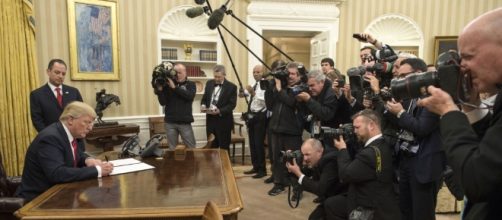On Thursday, U.S. President Donald trump finally signed the highly anticipated cybersecurity executive order, his first major step on cyber policy. The order sets the stage needed for the current administration to secure federal networks and to manage cyber security risk. The signing was originally scheduled for January, just right after Trump’s inauguration, but for one reason or another, it was delayed. Since then, the drafts have been improved to include inputs from key policy specialists.
Changes in order
There are several changes to the final draft of the executive order.
The current order requires federal agencies to adhere to the standards set forth by the National Institute of Standards and Technology (NIST) in risk assessment, placing responsibilities on the heads of agencies. Federal agencies are required to submit reports on their risks, due in 90 days, and in six months, a report on cyber security concerns is due. Agency leaders are required to explain the strategic, operational, and budgetary considerations that led to their security choices. The current draft calls for reviews of botnet risks and for cooperation from private sectors to help reduce botnet attacks.
Trump’s tech group
Trump’s senior adviser and son-in-law Jared Kushner in his Office of American Invention is expected to play a major role in coordinating the federal IT modernization effort.
Earlier in April, Trump gathered a group of government officials and the great minds of Silicon Valley as part of a newly established American Technology Council. The president’s team was also reportedly reaching out to companies the likes of Apple, Amazon, Cisco, Facebook, Google, IBM, Intel, Salesforce, SpaceX, and much more to attend a gathering at the White House in June. Chris Liddel, a former Microsoft executive, would lead the council.
Cyber security upgrade
According to Recode, Trump had made a promise during his campaign that he would examine the digital defenses of the government and the private sectors and come up with a plan to secure the data networks that have repeatedly been exposed to hackers, among others.
During a press briefing on Thursday, homeland security adviser Tom Bossert told reporters that the order was a United States motivated issue and not a “Russian-motivated issue.” Around 80 percent of the $80 billion federal IT budget will be used to take care of the aging IT systems. The order also calls for human resources, namely a workforce that is skilled in cyber security or cyber security students, to take government jobs right after graduation.


